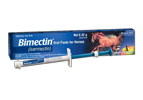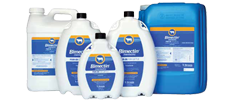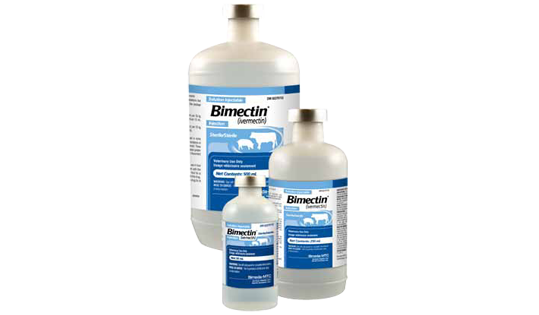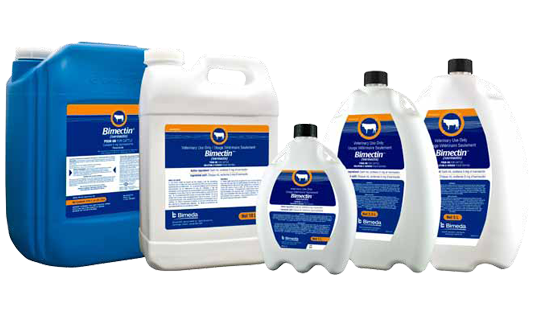Intestinal Worms
There are various types of intestinal worms, which impact negatively on the health and productivity of animals. To find out more about some of the most common intestinal worms in the UK and Ireland, read on. Bimectin Injection, Bimectin Pour On and Bimectin Plus are all licensed as treatments for these intestinal parasites.
Cooperia spp
Several species of Cooperia are found in the small intestine of cattle; C punctata, C oncophora, and C pectinata are the most common and their life cycle is essentially the same as that of other trichostrongylids. Most of them are found in the first 10–20 ft. (3–6 m) of the small intestine and have a prepatent period is 12–15 days.
In heavy infections there is profuse diarrhoea, anorexia, and emaciation, but no anaemia; the upper small intestine shows marked congestion of the mucosa with small haemorrhages a milder form can occur but can be responsible for weight loss and poor productivity.
Hookworms (Bunostomum sp)
The pre-patent period is ∼2 months. Infection is by ingestion or skin penetration; the latter is more common.
Larval penetrating the lower limbs may cause uneasiness and stamping, particularly in housed cattle. Adult worms cause anaemia and rapid weight loss. Diarrhoea and constipation may alternate. Hypoproteinemic oedema may be present, but bottle jaw is rare.
The worms are readily seen in the first few feet of the small intestine, and the contents are often blood-stained. As few as 2,000 worms may cause death in calves. Local lesions, oedema, and scab formation may result from penetration of larvae into the skin of resistant calves.
Intestinal Threadworms (Strongyloides sp)
The intestinal threadworms, Strongyloides papillosus, are embedded in the mucosa of the upper small intestine. Infections are most common in young calves, particularly dairy stock. Although signs are rare, they may include intermittent diarrhoea, loss of appetite and weight, and sometimes blood and mucus in the faeces. Large numbers of worms in the intestine produce catarrhal enteritis with petechial and ecchymosis, especially in the duodenum and jejunum.
Nematodirus spp
Nematodirus helvetianus is generally recognized as the most common species in cattle, although other species, e.g., N spathiger and N battus, can also infect cattle. The eggs develop slowly; the infective third stage is reached within the egg in 2–4 week and may remain within the egg for several months. Eggs may accumulate on pastures and hatch in large numbers after rain to produce heavy infections over a short period. The eggs are highly resistant, and those passed by calves in one season may remain viable and infect calves the next season. After ingestion of infective larvae, the adult stage is reached in ∼3 weeks. Worms are most numerous 10–20 ft. (3–6 m) from the pylorus.
Oesophagostomum sp
These have a direct life cycle. The larvae penetrate primarily into the wall of the lower 10–20 ft. (3–6 m) of the small intestine but also into the cecum and colon, where they remain for 5–10 days and then return to the lumen as fourth-stage larvae. The pre-patent period in susceptible animals is ∼6 weeks. However, in subsequent reinfections, larvae become arrested for some time, and many never return to the lumen (host encystment).
Young animals suffer from the effects of adult worms, whereas in older animals, the effect of the nodules is more important. Infection causes anorexia; severe, constant, dark, persistent, fetid diarrhoea; weight loss; and death. In older, resistant animals, the nodules surrounding the larvae become caseated and calcified, thus decreasing the motility of the intestine. Stenosis or intussusception occasionally occurs. Nodules can be palpated per rectum, and the worms and nodules can be seen readily at necropsy.
Trichuris
Trichuris infections are common in young stock, but the numbers of worms are seldom large. Clinical signs are unlikely, but in occasional heavy infections, dark faeces, anaemia, and anorexia may be seen.







